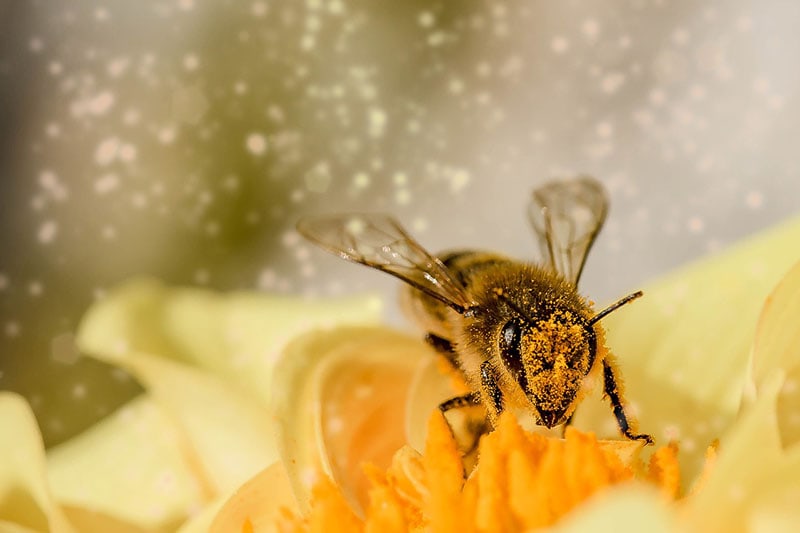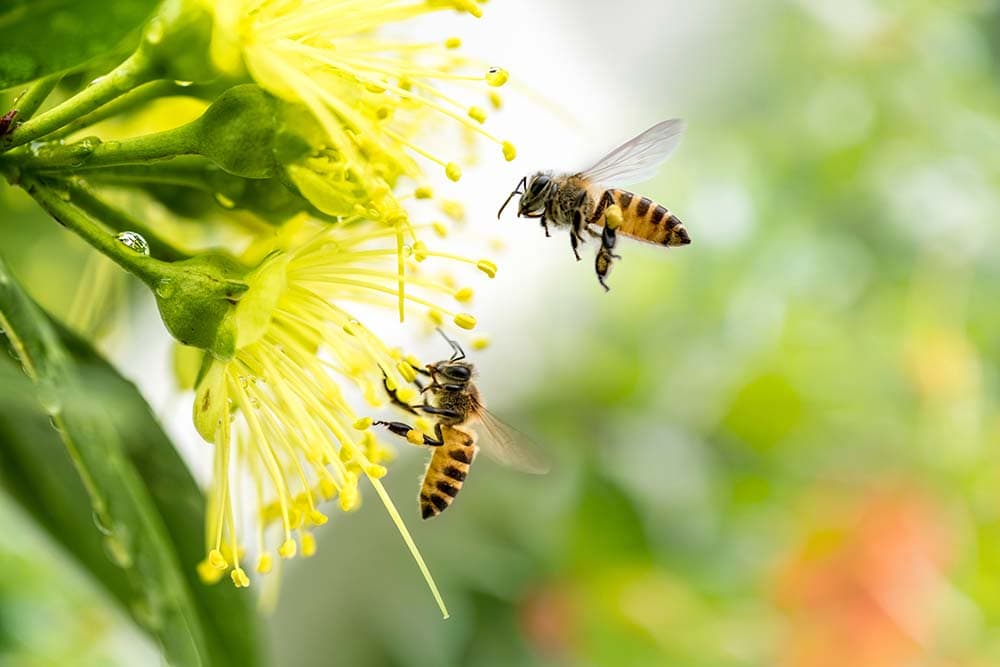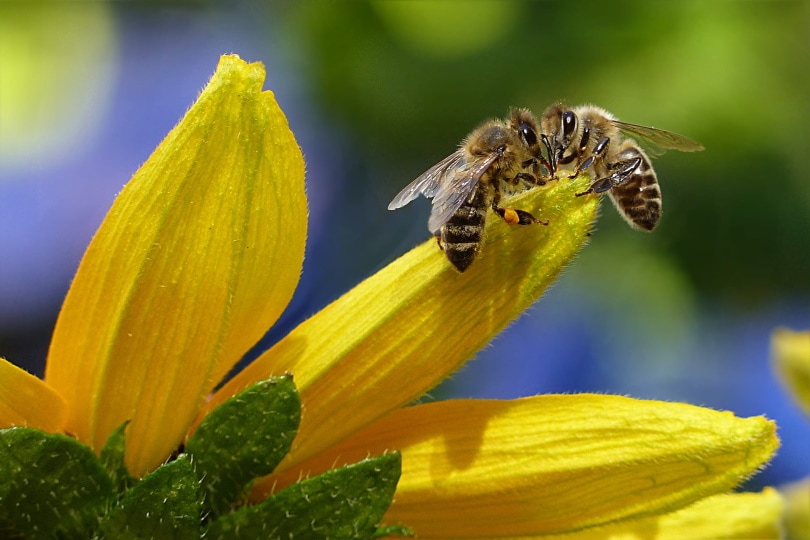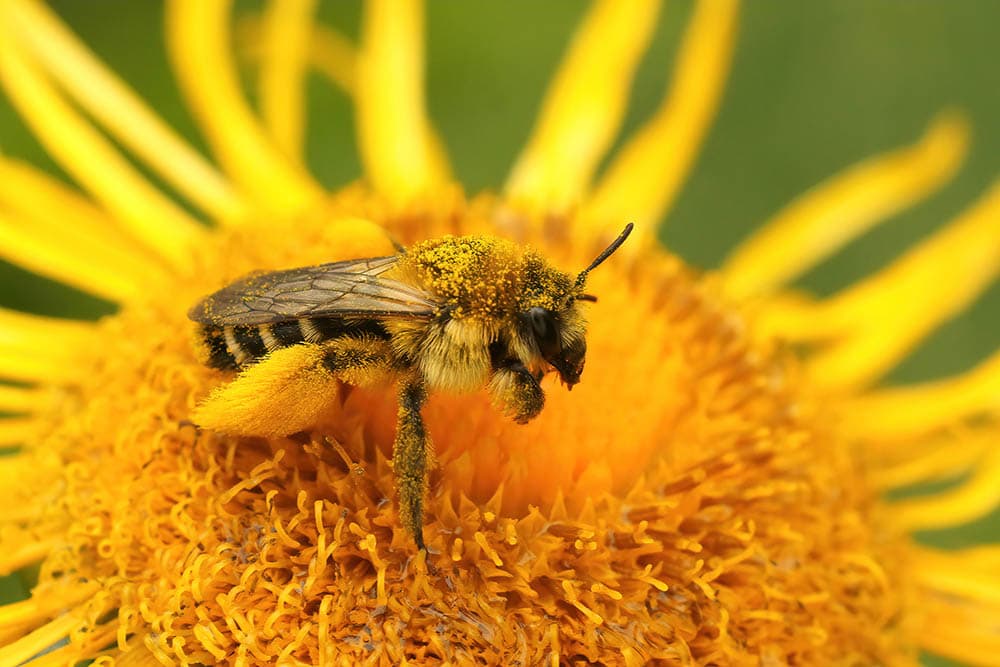What Is the State Insect of Nebraska? Reasons, Symbolism, & History
-
Pete Ortiz
- Last updated:

Nestled between the unforgiving Great American Desert and the magnificent Rockies, Nebraska is a place many animals call home. It is home to the Henry Doorly Zoo and Aquarium in Omaha. Although most people don’t subscribe to zoos when there is raw nature to explore, Henry Doorly is a 160-acre facility that hosts the world’s largest indoor jungle and desert, Lied Jungle and Desert Dome, respectively. But outside the zoo, the state is characterized by rolling plains and treeless prairies, especially in the western parts.
With the diversity of both manmade and natural climatic conditions, Nebraska is buzzing with millions of insects. From moths to butterflies and bees to dragonflies, they all congregate here to mate, lay eggs and feed other animals. Nebraska, being a nature-loving state, named the European or Western honey bee (Apis mellifica) as the state insect.
How Did Nebraska Select The Honeybee as the State Insect?
In 1975 school children from Auburn suggested the honey bee as the state insect. Having seen the crucial role it plays in nature, Governor J. James Exon signed a law that legalized the use of the honey bee as a state animal.
School children suggesting state animals is not a new thing. The young souls have been the driving force behind many animals climbing to state ranks in a bid to protect themselves and their environment.
In many states, school children drafted letters, collected signatures, and participated in many hearings for their selected insects to be adopted. Unfortunately, sometimes bills were dropped, leaving some states without a designated insect.

What Are Honey Bees?
Western honey bees are the most prevalent of the 12 species of bees worldwide found in all continents except Antarctica. Records show they may have been brought by European settlers from Western Europe, probably the UK, France, or Spain, around 1622 to where it is currently known as Jamestown, Virginia.
Like all bees, Western honey bees are eusocial insects which means they live in a social group or colony with a well-defined hierarchy and depend on each other for survival. The colony is known as a superorganism and consists of the queen, drones, and workers.
Drones have large heads and thoraxes whose purpose is to fertilize the queen. When the right period arrives, a couple of drones fly out to mate with the queen while in mid-air and die off thereafter due to exhaustion. The queen only mates once and stores enough sperm to fertilize hundreds of thousands of eggs in her 2-year lifespan. Workers (non-fertile males) will collect pollen and nectar and convert them into honey. They will also defend the hive and produce heat by vibrating their wing muscles on cold days.
When first introduced in the USA, western honey bees thrived well on Virginia’s vast forests and the humid and warmer winters. They slowly migrated inland to Nebraska. Here, the expansive landscape, dark caves on the Rockies, and few predators gave the bees free space to populate the state quickly. And within no time, Nebraskans were harvesting honey from over 50,000 colonies, as per the latest statistics.
In addition to natural migration, since many Nebraska farmers grew flowering plants that required pollinators, a few of them imported bees. Today, apiculture is a thriving business, and some bee owners are renting out colonies to crop farmers at a fee.

Why Are Bees Important to Nebraskans?
Bees are one of the most important economic animals in Nebraska. From the 1800s to the 2000s, bee colonies multiplied rapidly not only to reel in money but be of sentimental value.
1. Nebraska earns about $2.9 million annually from bees
According to the Department of Agriculture, Nebraska produced about 2 million pounds of honey¹ in 2019. Though these figures are down by over a quarter, bee farmers were happy their nature-friendly investment paid off a whopping $2.9 million.
Nebraska honey is in high demand because bees produce it from native plants, some with medicinal value.
2. European bees are part of nature conservation projects
Protecting bees assures a sustainable future for other animals. Giant hornets, goldenrod spiders, wasps, and birds depend on bees for survival. They hunt bees for food and protection. Theoretic studies show that bees may protect farms against large animals such as elephants and even deer.

3. They are pollinators
Nebraska grows melons, alfalfa, and sunflowers on a large scale. These plants require bees for pollination to yield better. Lawn plants such as common blue violet, dandelion, and white Dutch clovers also require bees to flower and brighten up gardens.
4. Bee’s byproducts reduce over-dependence on synthetic products
Wax and propolis are bees’ main byproducts. Wax is used in the production of nature-friendly candles and polishing floors. Furthermore, the ability of wax to repel water is used to preserve high-value metals such as bronze and waterproofing leather.
Propolis, on the other hand, is a resin-like substance that bees harvest and has antimicrobial properties to fight against infections.

Which Other States Use European Honey Bees as Their State Insect?
The European honey bee has been adopted by 17 states, making it the most common invertebrate to be used as a state animal. The earliest states to use it were Arkansas and North Carolina in 1973, New Jersey in 1974, Georgia in 1974, and Kansas in 1976. The latest states to adopt are Tennessee in 1990, Oklahoma in 1992, West Virginia in 2002, and Kentucky just 10 years ago.
With this mass adoption, there is no doubt the busy bee may be the next national insect to be proposed after the monarch butterfly bill failed to pass through Congress.
Which Other State Animal Is Used in Nebraska?
In 1927, Nebraska chose the Western meadowlark as a state bird. It is a small, medium-sized bird and was a popular choice because it fed on harmful insects when insecticides were yet to be commercialized.
Another possible reason is that the bird is very stunning. Light brown plumage runs from the back all the way to the wings. The chest is beautifully covered with yellow feathers, and a conspicuous V-pattern stands out.
 Conclusion
Conclusion
The European honey bee is Nebraska’s state insect selected in 1975 after a group of students from Auburn proposed it. The bee is not native to the USA and was imported by European settlers almost 500 years ago. One of the many reasons the bee was selected in Nebraska and 17 other states is its economic and biological value.
Honey produced brings the state almost $3 million annually, while the bees themselves are food to hundreds of insects, lizards, and birds.
- https://canr.udel.edu/maarec/honey-bee-biology/the-colony-and-its-organization/#:~:text=A%20honey%20bee%20colony%20typically,food%20collection%2C%20and%20brood%20rearing.
- https://statesummaries.ncics.org/chapter/va/#:~:text=Virginia%20has%20a%20humid%20climate,coastal%20region%20in%20the%20east.
- https://www.education.ne.gov/wp-content/uploads/2019/04/Nebraska-Visual-Presentation-Bees-to-Hay-1.pdf
- https://history.nebraska.gov/sites/history.nebraska.gov/files/doc/ntb15.pdf
- https://www.planetware.com/tourist-attractions/nebraska-usne.htm
- http://outdoornebraska.gov/biodiversityinsects/#:~:text=Nebraska’s%20insect%20communities%20are%20made,%3B%20flies%3B%20and%20many%20others.
See also:
Featured Image Credit: Myriams-Fotos, Pixabay
Contents


